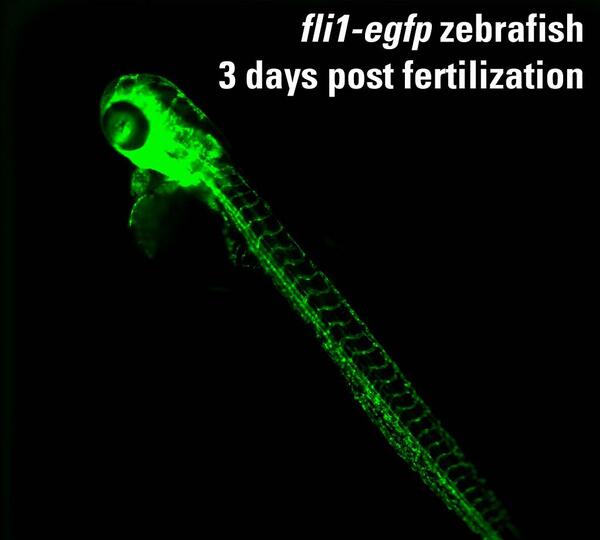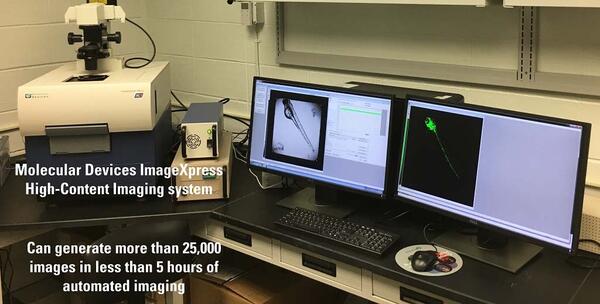Graphical depiction of three sources of variation that can affect accumulation of methylmercury in black rails: habitat (sediment) biogeochemistry, food web structure and biomagnification, and diet composition. Methylmercury moves from the sediment into the wetland food web and accumulates in rail tissues.
Images

Graphical depiction of three sources of variation that can affect accumulation of methylmercury in black rails: habitat (sediment) biogeochemistry, food web structure and biomagnification, and diet composition. Methylmercury moves from the sediment into the wetland food web and accumulates in rail tissues.

The cyanobacteria Gleotrichia shown under a microscope from a water sample collected at Ek Lake Trail, a popular recreational area in Kabetogama Lake where algal blooms frequently occur. Gleotrichia can produce microcystin.
The cyanobacteria Gleotrichia shown under a microscope from a water sample collected at Ek Lake Trail, a popular recreational area in Kabetogama Lake where algal blooms frequently occur. Gleotrichia can produce microcystin.

An algal bloom forming in Kabetogama Lake near Kabetogama Visitor Center, Voyageurs National Park
An algal bloom forming in Kabetogama Lake near Kabetogama Visitor Center, Voyageurs National Park

A hyperpigmented melanistic skin lesion on a Smallmouth Bass from the Chesapeake Bay Watershed.
A hyperpigmented melanistic skin lesion on a Smallmouth Bass from the Chesapeake Bay Watershed.
Scientists reviewing data to determine instrument performance at the Algal Toxins Laboratory in Lawrence Kansas.
Scientists reviewing data to determine instrument performance at the Algal Toxins Laboratory in Lawrence Kansas.
American kestrel (Falco sparverius)
American kestrel (Falco sparverius)
American kestrel eggs
American kestrel eggs
American kestrel (Falco sparverius)
American kestrel (Falco sparverius)
Captive Japanese quail (Coturnix japonica), and wheat seeds with (brown) and without (cream) pesticide coatings used to treat insect pests.
Captive Japanese quail (Coturnix japonica), and wheat seeds with (brown) and without (cream) pesticide coatings used to treat insect pests.
Biplot of principal component analysis of soil elemental composition data. Background and enriched samples are denoted. Colored points are from potentially enriched soils at mine sites, and black points are from unmined background sites. The effect of different elements on the analysis is shown by the rays, which are labeled to identify the elements.
Biplot of principal component analysis of soil elemental composition data. Background and enriched samples are denoted. Colored points are from potentially enriched soils at mine sites, and black points are from unmined background sites. The effect of different elements on the analysis is shown by the rays, which are labeled to identify the elements.

A cyanobacterial bloom in late fall at Ash River Harbor in Kabetogama Lake, Voyageurs National Park
A cyanobacterial bloom in late fall at Ash River Harbor in Kabetogama Lake, Voyageurs National Park

Cyanobacterial bloom at Kabetogama Lake in Voyageurs National Park
Cyanobacterial bloom at Kabetogama Lake in Voyageurs National Park

Cyanobacterial bloom in Kabetogama Lake with fall leaves in the background
Cyanobacterial bloom in Kabetogama Lake with fall leaves in the background
Algal bloom near the Ash River boat dock, a public access point for boating and fishing on Kabetogama Lake. Microcystin has been detected at this location and at nearby Sullivan Bay at concentrations exceeding recreational guidelines.
Algal bloom near the Ash River boat dock, a public access point for boating and fishing on Kabetogama Lake. Microcystin has been detected at this location and at nearby Sullivan Bay at concentrations exceeding recreational guidelines.

An algal bloom near the Ash River Visitor Center at Kabetogama Lake, where visitors enjoy picnics and trails year-round.
An algal bloom near the Ash River Visitor Center at Kabetogama Lake, where visitors enjoy picnics and trails year-round.

Tablet-enabled field forms have been developed to help coordinate field efforts, collect site information, GPS coordinates, photos, and control data collection.
Tablet-enabled field forms have been developed to help coordinate field efforts, collect site information, GPS coordinates, photos, and control data collection.

Using the 384-well plate format, a single zebrafish embryo is tested in each well. This is an example of a 72 hour post fertilization fli1:egfp zebrafish (3 millimeters long) imaged under a fluorescein isothiocyanate (FITC) filter.
Using the 384-well plate format, a single zebrafish embryo is tested in each well. This is an example of a 72 hour post fertilization fli1:egfp zebrafish (3 millimeters long) imaged under a fluorescein isothiocyanate (FITC) filter.

Molecular Devices ImageXpress† High-Content Imaging System that can generate more than 25,000 images in less than 5 hours of automated image acquisition.
Molecular Devices ImageXpress† High-Content Imaging System that can generate more than 25,000 images in less than 5 hours of automated image acquisition.

U.S. Geological Survey (USGS) scientist working on data analysis of cyanotoxins in water samples
U.S. Geological Survey (USGS) scientist working on data analysis of cyanotoxins in water samples
USGS scientists evaluating the nebulizer assembly in a mixed mode ionization source of a triple quadrupole mass spectrometer used to measure individual cyanotoxins
USGS scientists evaluating the nebulizer assembly in a mixed mode ionization source of a triple quadrupole mass spectrometer used to measure individual cyanotoxins

Keith A. Loftin, USGS, is the lead scientist for algal and cyanobacterial toxins
Keith A. Loftin, USGS, is the lead scientist for algal and cyanobacterial toxins









